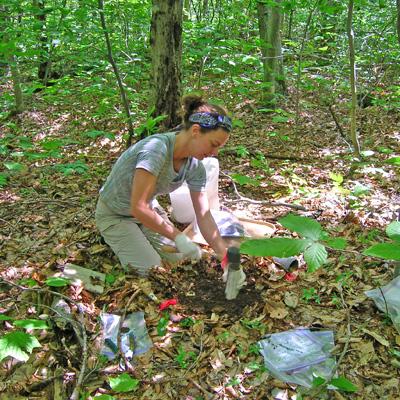Causes of Recent Increases in Dissolved Organic Carbon Export from Forested Watersheds in the Northeast

Reports show increasing concentrations of dissolved organic carbon in surface waters of North America and Europe. Scientists agree that these patterns must represent greater releases of carbon from terrestrial soils, potentially impacting soil carbon storage. Current declines in the acidity of precipitation increases the solubility of organic acids which are then more likely to be leached from soils. Studies also reveal that when fertilized with nitrogen, some soils show a greater release of dissolved organic carbon. Since nitrogen deposition rates have not decreased across most of the northeastern U.S., soils are still subject to high nitrogen inputs.
NSRC researchers conducted studies to determine if nitrogen deposition also effects soil organic matter release. Researchers analyzed soil water samples from nitrogen application study sites in Maine, Michigan, and New York's Catskill Mountains, and on Cary Institute property in New York. Samples from Maine and Michigan showed clear increases in dissolved organic carbon compared to samples from non-nitrogen amended sites. In contrast, samples from both New York sites revealed no consistent patterns in dissolved organic carbon. Researchers also irrigated soil cores, from a forest at the Institute, with standard "rainwater," high nitrogen solution, or low sulfur solution. Leachate from the cores had no consistent measures for dissolved organic carbon.
Overall, findings suggest that input chemistry may affect organic carbon generation and release, but the actual carbon yield may also be regulated by other unknown factors. Soils with abundant organic matter may be more sensitive to changes in precipitation chemistry and show larger fluctuations in export of dissolved organic carbon to aquatic ecosystems.
Download printable version [PDF]
Download full final report [PDF]
